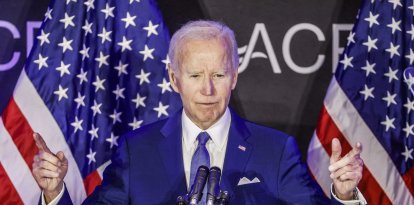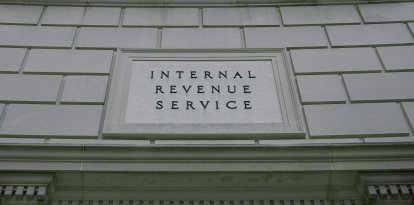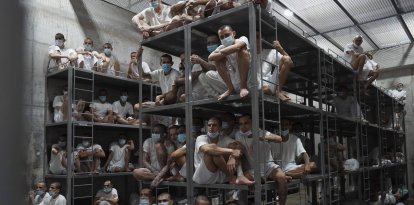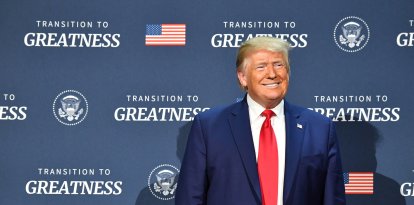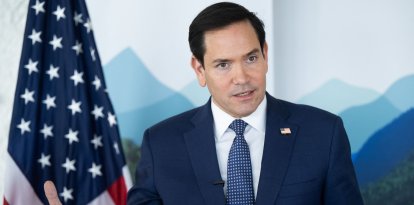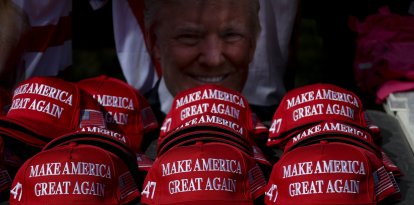Trump is the favorite for The Economist: The newspaper's statistical model gives him twice the probability of winning the elections over Biden
Four years ago, the same prediction system had given the Democrat an 83% chance of winning the Presidency. It wasn't wrong.
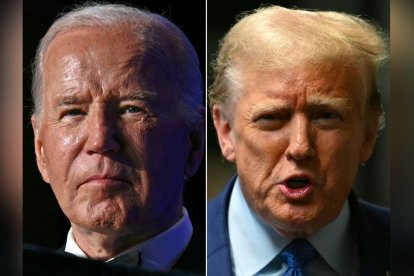
(AFP)
Former President Donald Trump today has a clear advantage over President Joe Biden heading into the November general elections, according to a statistical model that was correct in the 2020 elections and predicted a clear victory for the Democrat.
The electoral statistical model of the British newspaper The Economist, which evaluates the job performance of the sitting president, polls, historical election results and economic data from the United States, found that Joe Biden has only a 34% chance of achieving re-election right now. On the other hand, Trump's odds right now are two out of three, that is, 66%.
“That means a victory for Mr Biden would count as only a mild surprise, somewhat more likely than the 30% share of days on which it rains in London. Four years ago this week, this model gave Mr Biden an 83% chance,” the media outlet reads.
According to The Economist, which recognizes that its statistical model gives Trump better odds than other surveys, polls or studies, the difference between the former president and his Democratic rival is explained above all by Biden's weak performance in three key states: Georgia, Nevada and Arizona; belonging to the Sun Belt region.
Biden, who won these states in 2020, is losing in these battlegrounds by a considerable five-point margin.
According to the statistical model, Biden's chances of winning these states are slim. The Democratic president would barely have a 24% chance of repeating his victory in Georgia, where his loss of popularity among black voters is extremely damaging, according to The Economist.
In Arizona and Nevada, Biden's odds improve slightly, but not by much: 31% and 36% chances respectively. In these two states, Biden mainly suffers losses among Hispanics, perhaps the demographic group where he is performing the worst compared to 2020.
Considering that Biden has a really difficult mission in the Sun Belt, The Economist points out that the Democratic president's best chances lie in the Rust Belt, where there are three other key states in dispute: Pennsylvania, Michigan and Wisconsin. In the last two, despite remaining below Trump, Biden is close. However, if he wins both states, the president would still need to secure another swing state like Pennsylvania and one more vote from the electoral college of Omaha, Nebraska, to reach the magic number of 270 electoral votes.
The Economist's model explains that this would be difficult for several reasons, including that in both 2016 and 2020 Trump performed better in the Midwest than polls indicated.
“Our model assumes that both candidates are equally likely to benefit from polling errors. But if you compare current surveys with state-level polling averages from late 2020, rather than with the actual election results, the Rust Belt no longer looks like a Biden-friendly outlier. Instead, it is consistent with a national trend, in which Mr Trump appears to have gained three to five points of vote share. If that were the case, the former president could be on track for a decisive victory, flipping light-blue states like Maine, Minnesota, New Hampshire or Virginia,” reads the analysis of The Economist.
The media also recalled that the latest polls show a technical tie in Virginia and a considerable reduction in Biden's advantage in Democratic strongholds such as New York or New Jersey.
This whole context explains why today, five months before the elections, Trump is twice as likely to return to the White House facing a Biden who continues to suffer high unpopularity rates and defeats on most important issues, such as migration, economy and security.
However, despite everything mentioned, The Economist explains that Trump's distance is not decisive.
There are still five months until the elections and the statistical model cannot predict scandals, negative news for any of the candidates or unexpected situations that could change the electoral landscape, such as pending debates between the candidates. In the end, today Trump is the favorite, tomorrow that could change.
RECOMMENDATION
